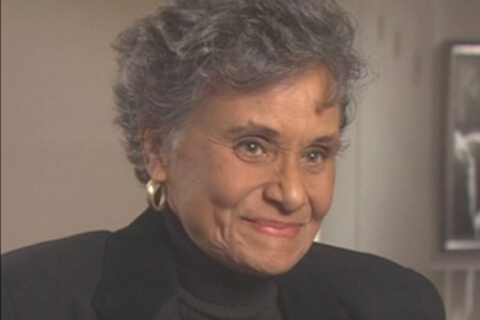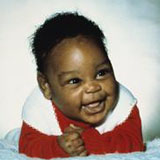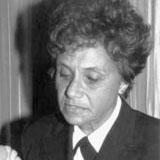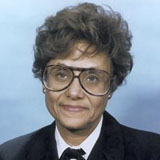Biography: Dr. Marilyn Hughes Gaston

Year: 1990
Achievement: Dr. Gaston was the first African American woman to direct a Public Health Service Bureau.
One day I was in the living room with my mother... and that day she fainted in the living room. And I had no idea what was wrong. It was very frightening to me, and back then we didn't have 911 and so I didn't really know what to do... she had cancer of the cervix. We were poor, we were uninsured, she was not getting health care, ...and that's why she fainted. And from that point on, I knew that I wanted to do somthing to change that situation.
Marilyn Hughes Gaston, M.D., faced poverty and prejudice as a young student, but was determined to become a physician. She has dedicated her career to medical care for poor and minority families, and campaigns for health care equality for all Americans. Her 1986 study of sickle-cell disease led to a nationwide screening program to test newborns for immediate treatment, and she was the first African American woman to direct a public health service bureau (the Bureau of Primary Health Care in the United States Department of Health and Human Services).
By the time she was 9 years old, Marilyn Hughes knew she wanted to be a doctor, but because she was poor and black, she was dissuaded from pursuing her dream. She studied zoology at Miami University, and when she graduated in 1960, she enrolled at the University of Cincinnati College of Medicine, encouraged by a physician she worked for. When she began medical school, she was one of only six women, and the only African-American woman in her year.
Dr. Gaston first became interested in the problems of children with sickle cell disease (SCD) while doing her internship at Philadelphia General Hospital in 1964. SCD is an inherited blood disorder that results in chronic anemia and recurring episodes of pain. In a person with SCD, some blood cells take on a sickle-like, crescent shape, causing hemoglobin to clump and block the capillaries, ultimately damaging blood-starved tissues. Over time, it can cause weakness, even death, especially for patients in developing nations, where treatment is not readily available. According to the Sickle Cell Disease Association of America, each year approximately a thousand babies are born with the disease in America.
One evening, during her internship, Dr. Gaston admitted a baby with a badly swollen hand. No trauma was reported, and she could not find the cause of the swelling. Her supervising resident suggested she check the blood work for evidence of sickle cell disease. The child did have SCD, and his hand was swollen from infection. Gaston was appalled that she hadn't even considered checking for this condition, and set out to learn everything she could about it. She secured federal grants to study SCD in children and established protocols for routine screening for the disease. In 1976 she began a long association with the National Institutes for Health as a medical expert, and later, as deputy branch chief of the Sickle Cell Disease Branch.
In 1986 Dr. Gaston published the results of a groundbreaking national study that proved the effectiveness of giving SCD children long-term penicillin treatment to prevent septic infections. Her study showed that babies should be screened for SCD at birth, so that preventive penicillin could be given right away. The study resulted in Congressional legislation to encourage and fund SCD screening programs nationwide. Within one year, forty states had begun screening programs. One of the most important conclusions of her work was the ease with which the complications of Sickle Cell Disease could be avoided with early treatment, a life-saving practice that became a central policy of the U.S. Public Health Service.
In 1990, Dr. Gaston went on to become director of the Bureau of Primary Health Care in the U.S. Health Resources and Services Administration, the first African American woman to direct a public health service bureau, where she focused on improving health care services for poor and underserved families. She controlled a budget of $5 billion serving 12 million patients. When Dr. Gaston retired in 2001, her staff presented her with newly received data from prophylactic penicillin programs recently carried out in Africa, underscoring the worldwide impact of her work.
Her scientific achievements, as well as her ongoing commitment to improving the health of poor and minority Americans, have been recognized in many awards and honors, including every award given by the Public Health Service, and the most prestigious honor awarded by the National Medical Association—the NMA Scroll of Merit, in 1999. She also received the NMA's Lifetime Achievement Award, several honorary degrees, and is celebrated on "Marilyn Hughes Gaston Day" in Cincinnati and Lincoln Heights, Ohio. The University of Cincinnati College of Medicine has named a scholarship in her honor, giving full medical scholarships to two underprivileged minority students each year. The scholarships help other young people facing discrimination and financial hardship to pursue their own dreams of a career in medicine.

Dr. Marilyn Hughes Gaston
Dr. Marilyn Hughes Gaston
One day I was in the living room with my mother. I grew up in the projects, which is what used to be called low-income housing for poor people. And we only had three small rooms, and that day she fainted in the living room. And I had no idea what was wrong. It was very frightening to me, and back then we didn't have 911 and so I didn't really know what to do. But the long and short of this is that she had cancer of the cervix. We were poor, we were uninsured, she was not getting health care. And from that point on, I knew that I wanted to do something to change that situation. At that time there were not many women in medicine. There certainly weren't many African Americans. So I had no role models, and I had no encouragement to go into medicine. My counselors all said, oh, no, don't worry about that. You'll never get admitted as a woman. You'll never get admitted as an African American, or as an African American woman, and besides, you're too poor to go. You know, you'll never have the money. But the motivation-I knew I really wanted to do this. And I had wonderful mentors that said, don't let your dreams go. And I guess in all fairness, back then, it did seem like an impossible dream at the time. So that these issues were very clear early on to me, and they have remained prominent in my career. And I have spent a career trying to change this, and trying to get health care to disadvantaged, underserved people throughout the nation. I spent some time at the National Institutes of Health. And one of the projects that I did while I was there was working with sickle cell disease, especially looking at the problem that babies with sickle cell disease die very suddenly-especially they're at risk in the first three years of life. I led a study where we looked at can't we prevent this? If by giving babies penicillin prophylactically, before they get the fever, before they get the infection-can't we save some lives? This study was so successful we stopped it midway-because the results were so compelling. The babies that got the penicillin prophylactically definitely did not have the infections, and it was a study that saved lives. And it is saving lives now. Worldwide. You know, because sickle cell disease is a worldwide problem. I always tell students that your heroes and your sheroes are not just in the history books, they're not just on TV, but they're all around you. And to look for them, and to ask them to mentor you. Don't just passively and say, oh, I wish I could have that person, ask them. And I always remind them, you know, that they'll always say yes. Because we're always so flattered, and we say, oh, yes. I would be glad to be your mentor.






